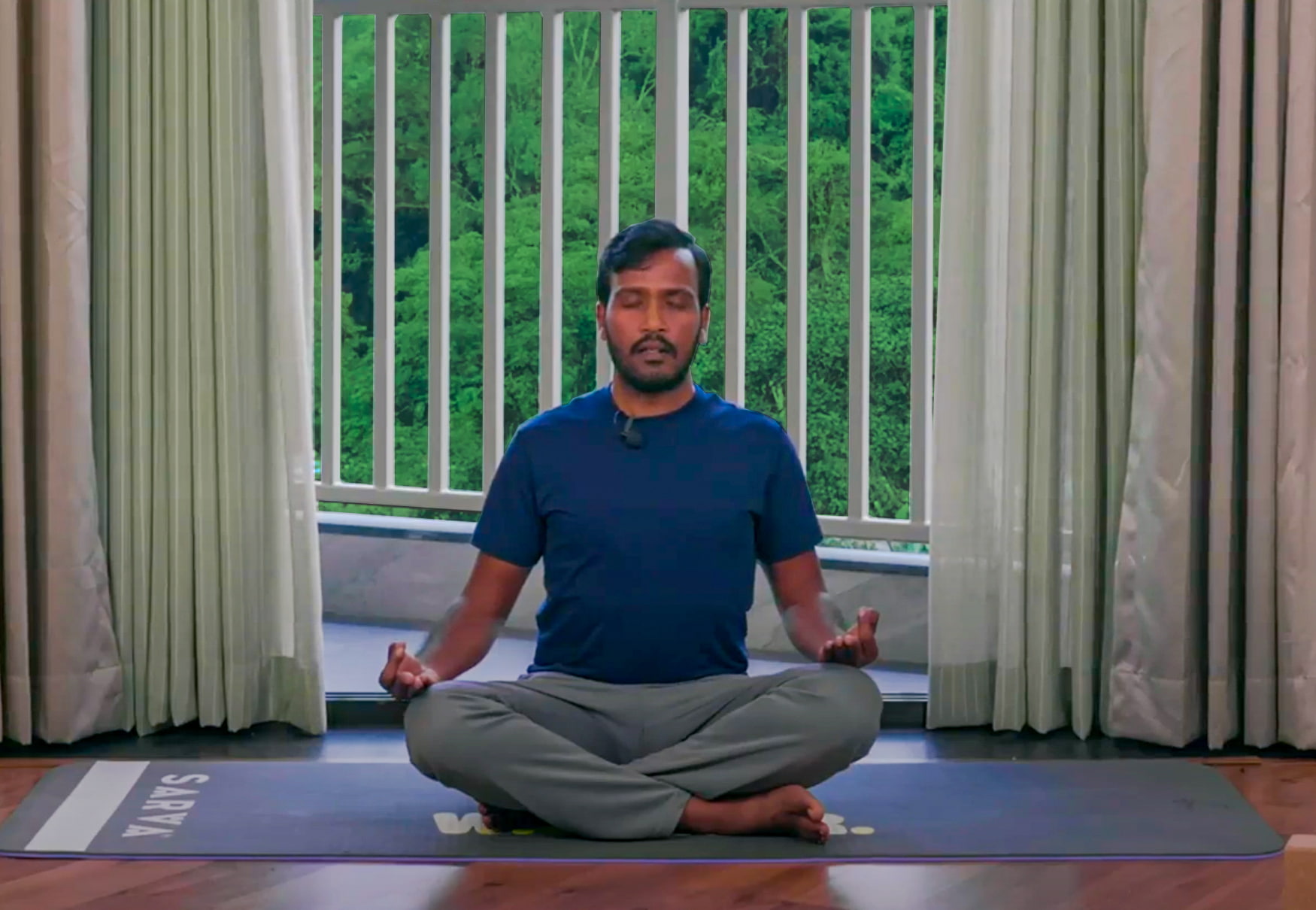How does yoga improve metabolism

Man survives by what he eats. Today many live to eat. Discipline in nutrition prevents many illnesses. Most of us eat more than we normally need and this disturbs the delicate functioning of all the systems in the body.
Indigestion is everyone’s problem regardless us suffering from a digestive problem at that particular moment or not.
Role of mind in improving the metabolism:
Stress, rage and frustration can lower our functional efficiency level. Eating in these states either makes us physically sick through dyspepsia and other conditions or mentally frustrated through lack of satisfaction and enjoyment. At the cellular level, the body misses times the various processes because of lack of adequate nervous and endocrine control. When the body’s controls break down we become prone to disease. The digestive system, being the most sensitive mechanism in the body is often the first to be affected and the complainant is mostly, the stomach.
Physiology of Metabolism:
When food is eaten, it must be digested, absorbed and assimilated. This is aided by enzymes in the mouth, the stomach, the liver, the gall bladder and the pancreas. This is a continuous process until all food is assimilated and all wastes are discarded.
For a smooth flowing continuous process, each part has to function properly. If one of the processes go wrong, it ends up in a vicious cycle of bad health results. Simply saying, if digestive juices don’t flow properly, the assimilation and absorption won't take place. And this shows up in every other process of the body. The whole organism is so integrated and dependent on its parts that if one part is not working the whole body suffers.
Role of digestive fire in improving metabolism:
When the digestive fire becomes weak, indigestion and other disorders set in due to poor nourishment. These fires are simply, the chemicals, acids, enzymes and other digestive juices. When they are in their correct proportion to maintain growth, strength, complexion, happiness and prolong the existence of a healthy body.
Role of a diet in maintaining good metabolism:
The role of a diet in maintaining the health of the entire digestive tract can never be overemphasized. Toxic agents present in food- preservatives, radioactive materials, hormones, antibiotics, pesticides – damage the cells of the pancreas and liver, and the intestinal wall. The most important dietary consideration for the geriatric is an adequate amount of fibre in the diet.
Dietary suggestions to boost the metabolism:
Most people who have any degree of sensitivity know which diet is best for them. The body tells us in so many different ways. For example, bad breath is a sign, that the food is acting as poison. Appetite also tells us what we desire to eat and when we start eating, the taste buds of the tongue tell us whether the food is good for the body. The trouble is that too often we just don’t listen.
Food to avoid:
Denatured foods; white flour, white bread, cakes and buns, polished white rice. White sugar, sweets, jam, sweet syrups, fruit in syrups, light treacle, heavily sugary drinks and glucose drinks. Fats and oils of animal origin, saturated acid fats. Heat-treated, canned foods, processed foods in which artificial sweeteners, flavourings and chemical preservatives are used.
Food to use:
Whole wheat, barley, rye or corn flour bread, whole or partially polished rice. Honey, brown sugar, molasses, black treacle, fresh fruit. Vegetable oils and clarified butter fresh foods, naturally processed foods like dried fruit or lentils and organically grown products.
The role of yogic practices in improving the metabolism:
The digestive system reflexes are based on a complex neurological, endocrine and psychological mechanism. The practice of asanas maintains the sensitive feedback mechanism of all these systems so that the whole digestive network can last a lifetime.
To ensure the health of the oesophagus, stomach, pancreas and gall bladder, the blood flow to these organs has to be vitalized and the nerves innervating them have to be invigorated by proper intraabdominal massage.
Standing poses begin by gently stimulating the abdominal organs, lifting them into the proper place and strengthening the walls of the organs.
Inverted asanas do the same in a superior manner and maintain the healthy feedback functions of the endocrine glands in relation to the digestive system.
Twisting poses squeeze the abdominal organs alternately, and massage keeps the cells soft and supple.
Forward bends also massage the intraabdominal organs but in a different manner. Hunger increases with these poses, and this is very useful to the elderly who often suffer from loss of appetite. Acidity is increased, and the problem of poor acid secretion is avoided by regular practice of these poses. The churning action of the stomach is enhanced. The oesophagus is stimulated by twisting poses and backbends creating a feeling of satiety in the abdominal organs and controlling indigestion, as the stretch improves blood supply to the stimulated organs.
Conclusion:
The digestive system is the key to a healthy availability of nutrients to the other parts of the body. Loss of its vigorous function results in the poor working of the entire body. All this can be avoided by proper diet and regular yoga practice. Yoga works at the cellular level with greater fitness than other exercises, due to the difference in the nature of the stimulus, the method of application, and the control of the mind in the process.
